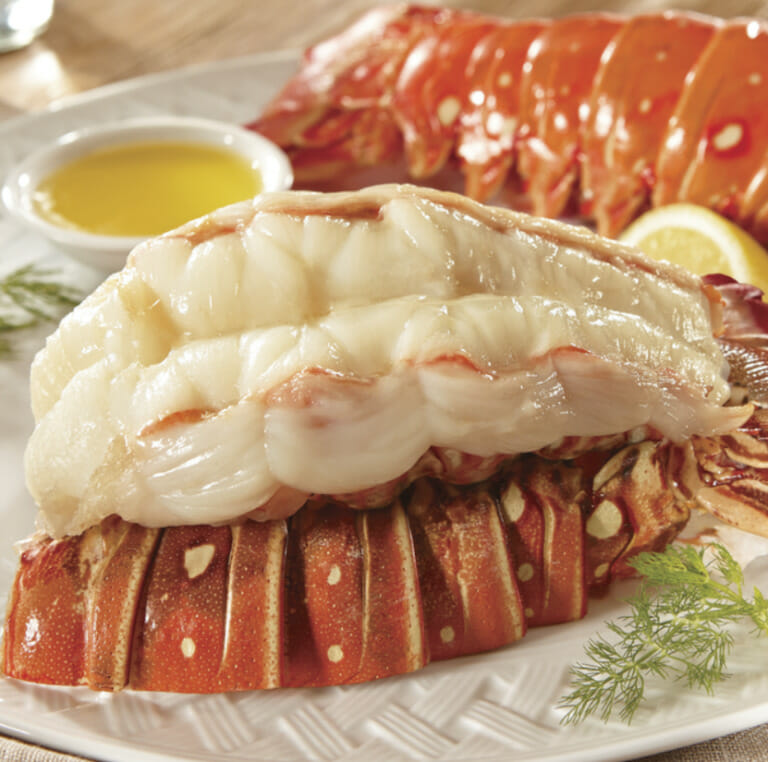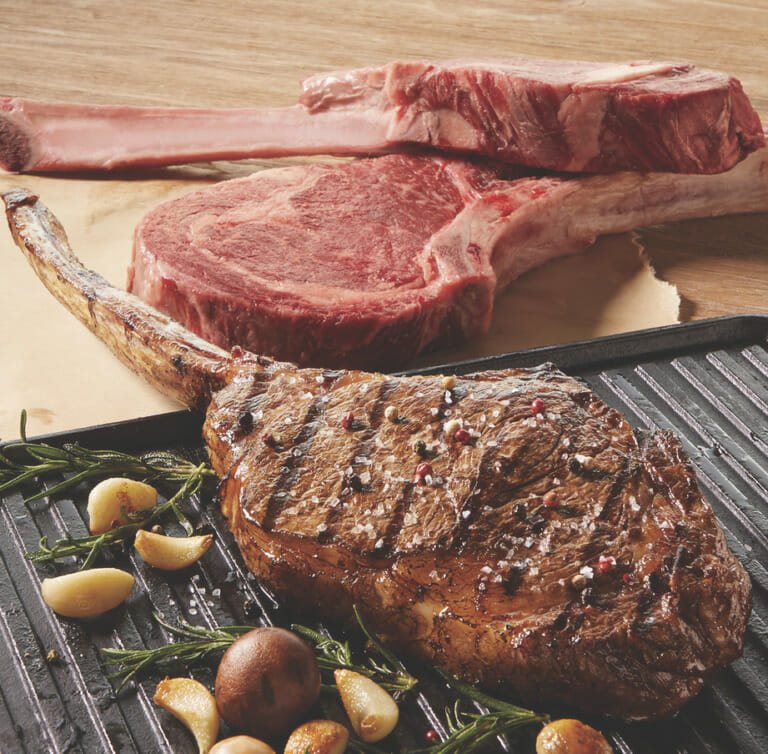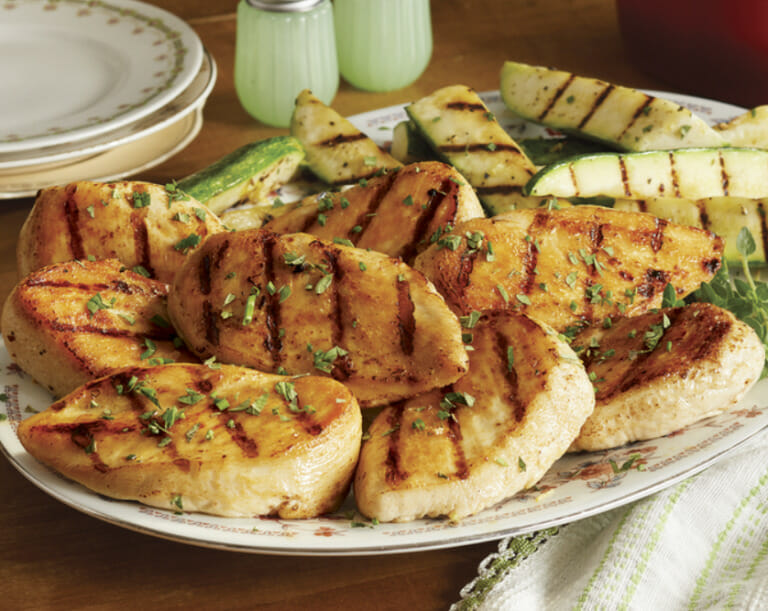Ethnic Food: World Cuisine Made Simple
Our increasing diversity means there are more types of cuisine to try than ever before. A few condiments and easy tips make international food simple.
You’ve often heard America referred to as the “great melting pot.” We’re a nation of immigrants who came to these shores over the centuries for various reasons, with each new group adding a little something to the pot. And nowhere are their contributions more evident than in the types of cuisine they brought with them—known collectively as ethnic foods.
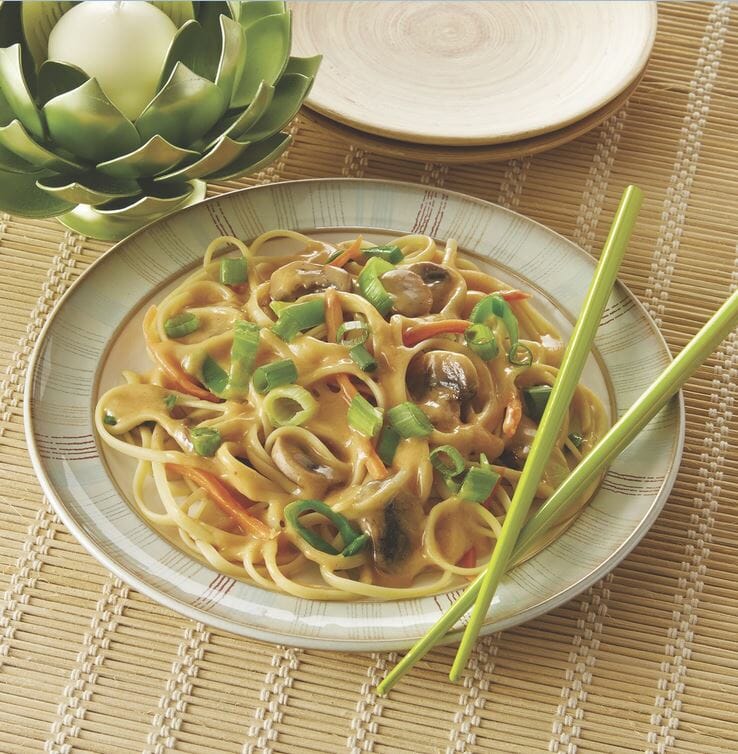
What Is Ethnic Food?
You hear the term often, but what does it mean? It’s really a matter of perspective. To most Americans, ethnic food is anything that came from outside North America or western Europe. But really, isn’t all food “ethnic” by nature?
When the English settlers came here in the 1600s, they brought their culinary traditions along with some of their seeds and livestock…but it wasn’t enough. They supplemented their diets with indigenous foods like maize (corn), beans and squash—the “Three Sisters” that made up the bulk of many Native American diets—as well as wild game, turkey and other local meats. This created a new “American” cuisine.
As successive waves of immigrants arrived from other nations, they brought their foods and techniques with them and incorporated the indigenous ingredients in ways that had not previously been considered. This cross-pollination of cuisines added diversity and interest to the American flavor palette, and even enhanced the original cuisines that were brought here.
For example, more than 100 years before the English arrived in North America, Spanish conquerors brought capsicum (chile) peppers, tomatoes, cocoa and other foods from Central and South America back to Europe. Can you imagine Italian food without tomatoes, Spanish or Hungarian foods without peppers, or the French or Swiss without chocolate? And because of worldwide colonization by western European countries in those days, many New World foods made their way to far-flung places in Asia (India and the Far East) and Africa, all of which contributed their own exotic spices and other foods.
The point here is that virtually all American food is “ethnic” food, and even some of the international foods that were brought here by immigrants were already infused with New World ingredients. Still, even though the culinary lines might be more blurred than the borders on a map, each contributing cuisine has added its own array of flavors to the pot. And knowing your way around those world flavors will allow you to create your own international food at home.
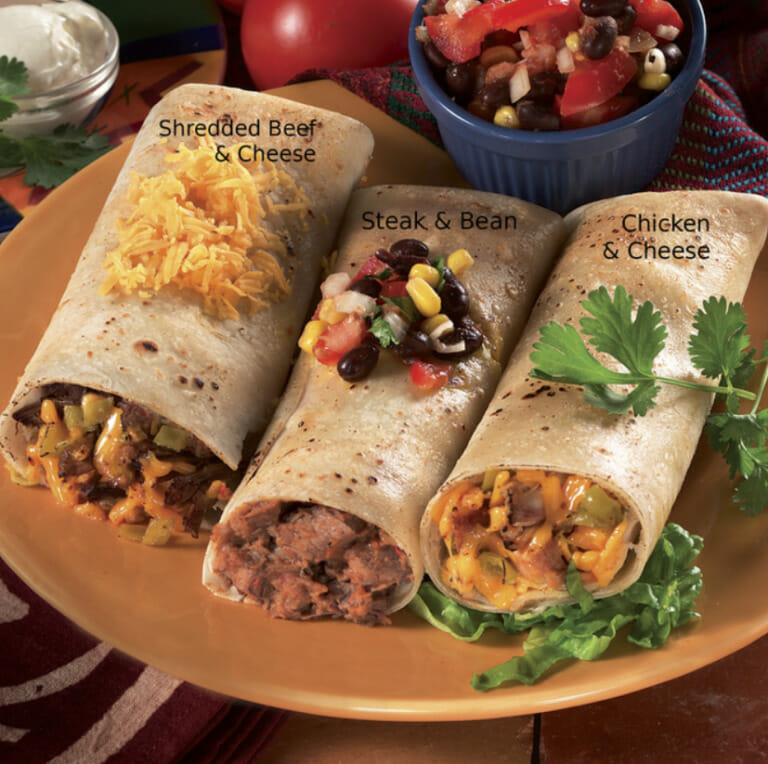
International Foods: Types of Cuisine
Of course, there are far too many world cuisines to possibly master, or to cover in this article. Even a relatively small nation like Italy has numerous regions, each of which has its own distinct style and entire cookbooks devoted to it. What we will do here is to identify some of today’s most popular styles and provide some basic tips for creating some easy ethnic meals.
Voice of America’s blog identifies the Ten Most Popular Ethnic Cuisines in America as Chinese, Mexican, Italian, Japanese or sushi, Greek, French, Thai, Spanish, Indian, and Mediterranean.
Again, many of these cuisines have far too many regional variations to adequately cover in a small space, and there is a lot of overlap. Mediterranean, for example, encompasses all of Greek cuisine and a good portion of Italian, French, and Spanish. Conversely, many American cooks—and even restaurants—tend to lump Chinese, Japanese and Thai into one big, nebulous “Asian” category.
To simplify your world food journey and keep your pantry to a manageable size, think in terms of “culinary continents” encompassing cuisines that share some basic ingredients, flavors and styles. These major culinary styles are Asian, Latin, Mediterranean, and Indian. (French and Italian foods have become so much a part of American cuisine that they hardly seem “ethnic.”)
Keeping these common ingredients (in bold below) in your pantry or fridge will empower you to add instant international flair to your cooking and complement specific dishes you may find elsewhere.
Asian: Chinese is the ancient root cuisine here, and most cuisines in the East at least borrow from it. Stir-fry meats and vegetables in neutral (not olive) oil flavored with fresh ginger and garlic. Season with soy sauce or any of a number of purchased sauces, and serve with rice. Chili pastes and sauces like Sriracha let you add heat that complements Eastern flavors. To add a Thai accent, finish with fresh cilantro, mint and basil and a squeeze of lime. This article will teach you how to marinate steak and chicken Asian-style.
Latin: This refers to Latin America and the New World cuisines combining native traditions and ingredients with those of the Spanish. Mexican is the most familiar style to Americans, and chile peppers are the star…although the vast majority of Latin foods are not spicy. Sauté with onion and garlic, season with spices like chili powder and cumin, finish with lime juice and cilantro. Marinate steak fajita-style using the previously mentioned article.
Mediterranean: While the cuisines of the Mediterranean are widely diverse, there are two common threads: olive oil and garlic. Use this pair as a base for sautéing vegetables; serve with meats or fish or incorporate into a tomato sauce. Season with herbs like oregano and basil, or add a Middle Eastern or North African accent by adding spices like cinnamon and cumin. Grilled meats and fish are very popular in the Mediterranean, and they are typically prepared very simply, with flavorful side dishes and spicy accompaniments adding support.
Indian: India is the home of spices, and the cuisine reflects it. Curry powder is a complex blend of a dozen or more spices, and while most Indian cooks assemble their own spice blend for each dish, it does a nice job of seasoning a variety of foods. Many dishes start by sautéing the “holy trinity” of onion, ginger and garlic in oil and adding the spices. A sauce can be made with coconut milk, and the whole thing served over fragrant, nutty basmati rice.
You may wonder why the cuisines of Africa are not mentioned. North African food is considered Mediterranean. Ethiopian food shares many flavors and spices with Indian food, as does much of sub-Saharan Africa, where trade routes were established with the Arab world long before European colonization. Also, many African ingredients and techniques, arriving here with the slaves, influenced the cooking of the Caribbean and the American South in the fusion cuisine known as Creole. And speaking of fusion…
World Food Trends
The blending of two or more cuisines together in a single mashup was identified as the hottest current trend by the National Restaurant Association in a survey of nearly 1,300 chefs. It identified the Top 5 Ethnic Food Trends for 2015 as (from 5 to 1): Southeast Asian, Peruvian, regional ethnic, authentic ethnic, and ethnic fusion.
Southeast Asian: Anchored by Thailand and Vietnam, the region once known as “Indochina” is itself a fusion of Indian and Chinese influences. Ginger and garlic, of course, are major flavors. The curries are flavored with wet pastes rather than dry powders so the fresh ginger and chile flavors shine through, and the ubiquitous fish sauce adds a deep umami flavor (the mysterious “fifth flavor” generally attributed to MSG).
Peruvian: Another fusion cuisine, Peruvian naturally falls under the Latin category. It features chile peppers (known as aji) found nowhere else, but you can come close by using some of the Caribbean chiles like Scotch bonnet or habanero. The basic grain is quinoa (KEEN-wah), known as a superfood because, unlike most grains, it contains complete protein thanks to a full complement of amino acids. A very popular dish is ceviche, a sort of Latin version of sashimi (raw fish sushi) also found in Mexico in which the raw fish is marinated in lime juice and chiles.
Regional ethnic: This term is the opposite of fusion, and of our above exercise in simplification. It refers to going beyond “Italian” or “Chinese” and identifying the specific region where a dish comes from (like Tuscan or Szechuan). Restaurants of this nature will serve only main and side dishes from a particular region, knowing that they will naturally complement one another and, being keenly interested in terroir, will likely serve wines from the region as well.
Authentic ethnic: Going hand-in-hand with regional ethnic, this trend involves using only the true ingredients and techniques of a given region. A Peruvian restaurant will seek out the special chiles that give the foods their unique flavor; a Brazilian steakhouse will offer hunks of beef fire-roasted on a spit; a Moroccan restaurant will require (or at least encourage) you to eat with your fingers from a communal bowl.
Ethnic fusion: This is hardly a new trend, but it continues to be popular—probably because of America’s “melting pot” nature. Creative American chefs have been blending aspects of various cuisines for decades. The “Pacific Rim” fad in the 1990s was a mashup of Asian and Latin flavors. Numerous “Mediterranean” restaurants have blended foods from Spain, Provence, Greece, Israel and North Africa since around that time. And Monticello, Wisconsin’s Chef Wave Kasprzak mixes classic French and Italian techniques with Asian, Mexican and Southwestern flavors.
Chef Wave’s easy heat-and-serve gourmet dishes can take you on a culinary adventure even if you don’t feel like cooking. If you do have a little time on your hands, pair one of his innovative entrées with an easy side dish using the above tips and a few pantry items. Or jazz up some restaurant-quality meats in your favorite ethnic style and accompany them with one of his easy side dishes. You’ll be a culinary world traveler in no time!
